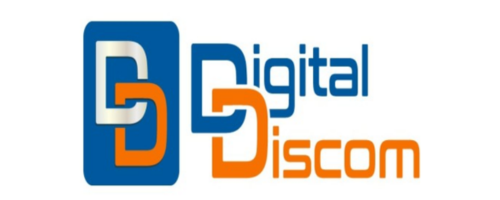The Complete Guide for Businesses
1. What is Open Access in Power Distribution?
Open Access is the mechanism that allows large electricity consumers to purchase power directly from generators, power exchanges, or traders, bypassing the local distribution company (DISCOM), by using the existing transmission and distribution network on a non-discriminatory basis.
This concept, introduced under Section 42 of the Electricity Act, 2003, was designed to create competition, bring efficiency, and reduce power costs for industrial and commercial consumers.
Eligibility
- Conventional Open Access: Consumers with a connected load of 1 MW or more.
- Green Open Access: Introduced under Green Open Access Rules, 2022, for consumers with a load of 100 kW and above, specifically for renewable power procurement.
2. Why is Open Access Important in India?
Indian industries face some of the highest electricity tariffs in Asia, mainly due to cross-subsidy surcharges that fund agricultural and residential subsidies. Open Access offers businesses choice, flexibility, and cost reduction, making them more competitive globally.
Additionally, with corporate sustainability goals and Renewable Purchase Obligations (RPOs), Open Access is a strategic tool for decarbonization.
3. Advantages of Open Access for Businesses
a) Substantial Cost Savings
Industrial tariffs from DISCOMs range between ₹7–₹10 per kWh, while Open Access power from renewable sources can be as low as ₹3–₹5 per kWh. This leads to 20–40% cost reduction, depending on state charges.
b) Renewable Energy Integration
Companies can procure solar, wind, or hybrid power via Open Access to meet RPO obligations and achieve Net Zero targets.
c) Flexibility in Power Procurement
Options include:
- Short-term (from power exchanges)
- Medium-term (bilateral contracts)
- Long-term (PPA with developers)
d) Improved Energy Security
Diversification of power sources reduces dependency on DISCOMs and mitigates tariff shock risks.
4. Types of Open Access Transactions
- Short-Term Open Access (STOA)
- Duration: 1 day to 1 month
- Ideal for spot market purchases on platforms like Indian Energy Exchange (IEX) or Power Exchange India Ltd (PXIL).
- Medium-Term Open Access (MTOA)
- Duration: 3 months to 3 years
- Suitable for medium-load planning.
- Long-Term Open Access (LTOA)
- Duration: 7 years or more
- Preferred for renewable energy PPAs, especially for solar and wind projects.
5. Open Access Platforms & Market Mechanisms
- Indian Energy Exchange (IEX) – India’s largest power trading platform, offering Day-Ahead Market (DAM), Real-Time Market (RTM), and Green Term-Ahead Market (GTAM).
- Power Exchange India Limited (PXIL) – Offers short-term and renewable energy trading solutions.
- Green Day-Ahead Market (GDAM) – Introduced for renewable energy trading, enabling Open Access consumers to directly buy green power.
6. Regulatory Framework & Key Charges
Open Access charges vary by state and include:
- Transmission Charges – For using interstate and intrastate transmission lines.
- Wheeling Charges – For using distribution lines.
- Cross-Subsidy Surcharge (CSS) – Levied to compensate DISCOMs for losing high-paying consumers.
- Additional Surcharge (AS) – Applicable if the consumer exits the DISCOM supply permanently.
- SLDC Charges – Paid to the State Load Dispatch Center for scheduling.
Impact on Economics:
States like Gujarat and Karnataka have low CSS, making Open Access attractive, while Maharashtra and Tamil Nadu have high surcharges, reducing cost benefits.
7. Central and State-Level Open Access Policies
Central Initiatives
- Electricity Act, 2003 – Legal foundation for Open Access.
- Green Open Access Rules, 2022 – Simplifies approval for renewable energy procurement, reducing approval timelines to 15 days and allowing 100 kW+ consumers to participate.
State Highlights
- Gujarat – Leading in solar Open Access; minimal restrictions.
- Karnataka – Attractive for wind and solar captive projects.
- Tamil Nadu – Active market for wind Open Access, but policy revisions ongoing.
- Maharashtra – Offers Green OA, but surcharges are significant.
- Delhi & Haryana – Favorable for rooftop and hybrid solutions.
8. Leading Companies Facilitating Open Access in India
- Tata Power Renewable Energy Ltd (TPREL)
- Adani Green Energy Limited
- ReNew Power
- Azure Power
- Hero Future Energies
- CleanMax Enviro Energy Solutions
- AMP Energy India
- Avaada Energy
These developers offer Group Captive and Third-Party Open Access solutions, enabling C&I consumers to shift to cheaper, greener power.
9. Who Can Benefit from Open Access?
Ideal Candidates
- Large Industrial Units: Steel, Cement, Chemicals, Automobiles.
- IT Parks & Data Centers: High energy demand and sustainability mandates.
- Commercial Complexes: Shopping malls, corporate offices, hospitals, and hotels.
- Educational Institutions: Universities and large campuses.
Eligibility Thresholds:
- Conventional OA: 1 MW+ connected load.
- Green OA: 100 kW+ for renewable energy procurement.
10. Challenges in Open Access Adoption
- Regulatory Uncertainty: Frequent policy changes discourage investments.
- High CSS and Additional Surcharge: Some states impose heavy charges, reducing financial benefits.
- Approval Delays: Despite central mandates, states often delay approvals.
- Grid Congestion: Limited transmission capacity in certain regions.
11. Future of Open Access in India
The Green Open Access Rules, 2022, coupled with India’s 500 GW renewable energy target by 2030, will significantly expand Open Access adoption. Digitization of approval processes and reduction of CSS will further encourage participation.
12. How UrjaOne Platform Helps Businesses with Open Access
UrjaOne, India’s first energy services marketplace, simplifies Open Access procurement:
✔ Connect with Trusted Power Generators – Access verified renewable energy developers and trader powers.
✔ Compare Cost Benefits – Instant savings calculator comparing DISCOM vs Open Access tariffs.
✔ Choose Models – Third-Party Open Access or Group Captive models tailored for your business.
✔ Simplify Compliance – Get guidance on state policies, approval process, and RPO compliance.
✔ Digital Documentation & Tracking – End-to-end process management via app.
With UrjaOne, businesses can reduce energy costs by 20–40%, meet sustainability goals, and secure predictable power prices.
Conclusion
Open Access in India’s power distribution sector is a transformative policy enabling large consumers to access cost-effective, green energy. With state-wise reforms, central green OA rules, and platforms like UrjaOne, the path to energy savings and sustainability is more accessible than ever.




